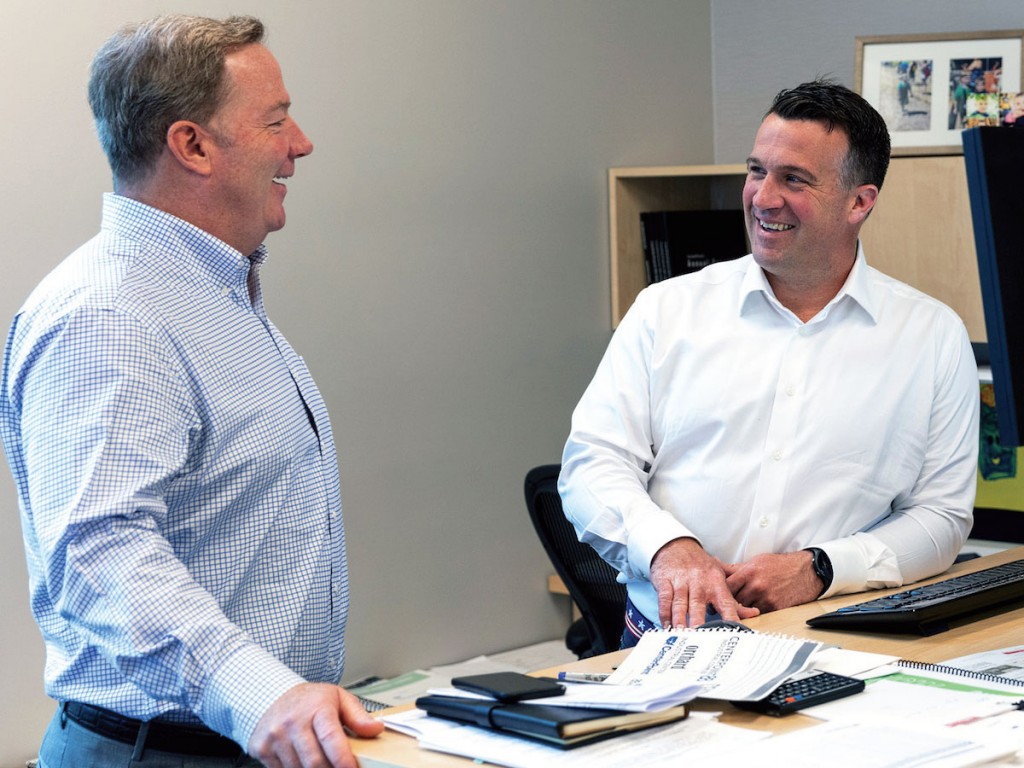Applying principles learned in the military, Brian McKiernan is advancing the role of inland intermodal facilities as key nodes of international and domestic freight transportation.
As senior vice president of Oak Brook, Illinois-based CenterPoint Properties, McKiernan spearheads business development efforts for North America’s leader in industrial real estate and multimodal transportation infrastructure, including a 6,500-acre facility southwest of Chicago that is billed as the continent’s largest master-planned inland port.

As leader of business development for CenterPoint Properties, with facilities including North America’s largest inland port, what role do you see inland hubs playing in intermodal transportation?
Inland hubs already are critical nodes in intermodal transportation, and I think they’re going to continue to be important, both financially and environmentally, in the direction where the beneficial cargo owners are going.
Rail obviously is a very efficient mode of transportation, and intermodal supports that. It provides a pretty green solution, minimizing the truck traffic on the road system. I think it’s going to be increasingly important in the BCOs’ import distribution strategies.
Do you see the role of inland ports further increasing in North America in this era of ocean carrier alliances and supersized containerships, as well as burgeoning e-commerce and technology advances?
Absolutely. If you look at inland ports, the thing everyone tends to think about is the international inbound. But, if you look at where we’ve seen inland ports grow, like the BNSF Willow Springs facility just outside Chicago, which is really backed by UPS, you have more short haul coming online. This is also true on the East Coast.
Parcel companies, like FedEx and UPS, which are really clients 1 and 2 for the railroads, tie right in with e-commerce. And e-commerce trends like same-day delivery are made possible with strategically located inland ports while reducing transportation and inventory costs.
I think you’re going to see an uptick in inland ports and different types of inland ports as technology advances.
Specifically, how is CenterPoint Intermodal Center, located 40 miles southwest of Chicago, facilitating efficient cargo flows and supply chain cost savings at the epicenter of transcontinental freight movement?
The CenterPoint Intermodal Center is a vital transport destination, part of the land bridge from Asia to L.A. to the Midwest.
If you look at the population centers, Chicago is the third-largest U.S. city [with nearly 2.7 million residents, behind only New York and Los Angeles].
To provide an import destination for all consumers in the Chicagoland area, the CenterPoint Intermodal Center is served by a variety of rail modes, including a good balance of domestic and international [containers], plus boxcar and barge and bulk rail with the bulk rail terminal. So there is a good amount of flexibility.
And it’s collocated next to I-80 and I-55, so you can efficiently go east to west and north to south by highway.
That’s where we see its strength. With multiple modes of transportation, carriers and importers can really make sure they’re driving the lowest cost and best service to ultimately get the product into the store.
How does your military background – as a U.S. Air Force Academy graduate and U.S. Air Force captain prior to joining CenterPoint in 2006 – benefit you in your present position?
Logistics and the supply chain, especially as you see it in modern retailers’ distribution strategies, is really borne out of a lot of the same principles the military operates on. You can only open a new store provided you can supply it. It’s the same concept as that you can only extend your force as far as you can supply it. So I think those principles are very similar.
If you look even at the Elwood portion of the [CenterPoint Intermodal Center] park here in Joliet and Elwood, it’s an old Army base, where it had two Class Is – both BNSF and UP [Union Pacific] rail service – and the ability to get boxcars in and out. It was located on the [Des Plaines] River and located at I-55 and I-80.
For me, what you learn in the military in terms of how logistics work is very similar to how companies are approaching the supply chain these days.
How do you like to unwind from the stresses of work?
I enjoy spending time with my wife and three kids. We have two boys and a daughter, and they’ll play pretty much any sport – baseball, lacrosse, football, basketball. So it’s mostly watching and helping them with their sports and maybe the occasional round of golf when I can get that in.

_Alliance_-_127500_-_8518a8cb53bfa1ee3241a9389b0c47f7b53ad9ce_lqip.png)

